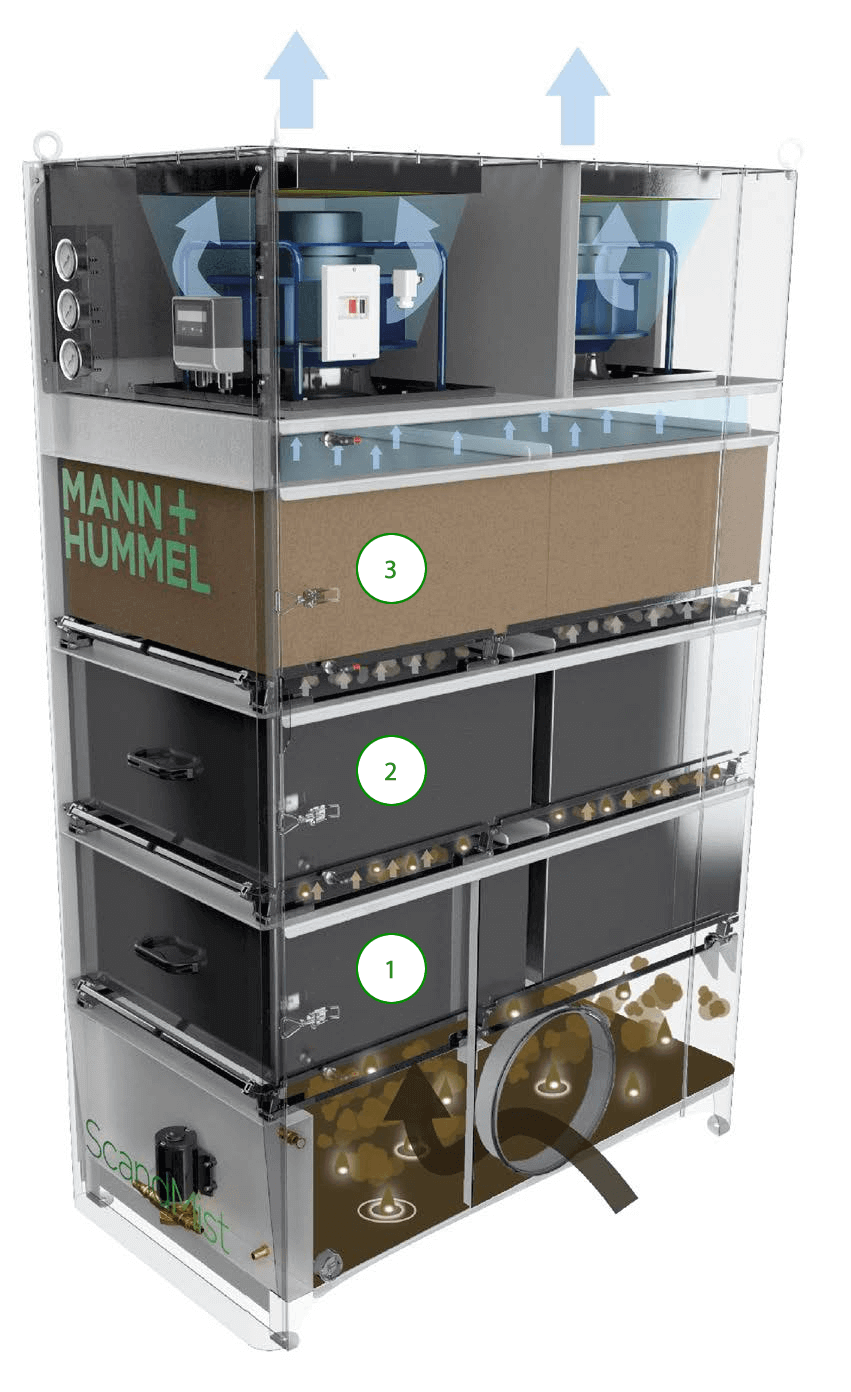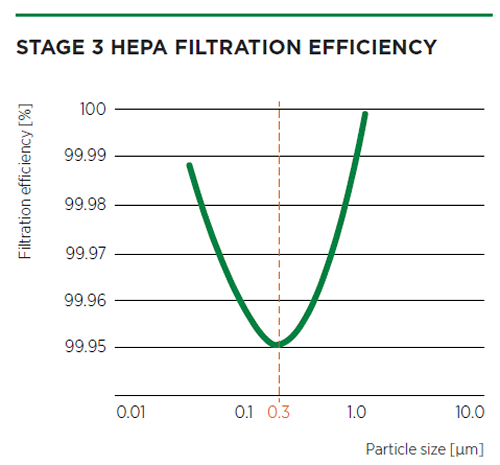How It Works

ScandMist uses a three-stage filtration process to progressively clean air flow. Coalescing stages one and two remove 95% of emulsion and 98.5% of neat oil @ 0.4 μm, and the final HEPA filter cleans air so that it can be safely returned into the work environment.
This unique approach prolongs filter life, reduces energy consumption and allows the captured coolant to be recycled.
 Filter stage 1
Filter stage 1
The first stage takes place when multiple layers of pleated media collect oil or coolant and allow it to drain by gravity to the base of the collector. The filter media does not absorb oil, it coalesces the droplets until they are substantial enough to drain.
When contaminated air passed through the filter media, oil particles are attracted to the oleophobic fibers. The oil droplets collide with the fiber and accumulate. When drops become larger, they are heavy enough to fall down to the base where it can be collected or drained back to the machine tool sump.
 Filter stage 2
Filter stage 2
After the air is scrubbed it's then passed through a second coalescer in stage two, where the process is repeated. This coalesces has a higher filtration efficiency and captures the smaller oil particles that were not caught in stage one.
After stage two, the air is between 95-98% free from oil mist.
 Filter stage 3
Filter stage 3
Stage three was developed to thoroughly clean the remaining air resulting in a standard far more superior than the surrounding ambient air.
With a HEPA filter, sub-micron particles such as trace oil, smoke, bacteria, pollen, and spores, are trapped.
ScandMist employs an H13 (to EN 1822) HEPA filter that provides 99.95 % efficiency at 0.3 μm. What does this mean? Effectively, all of the hazardous particles found in a work environment are captured to return clinically clean air to the working facility.
